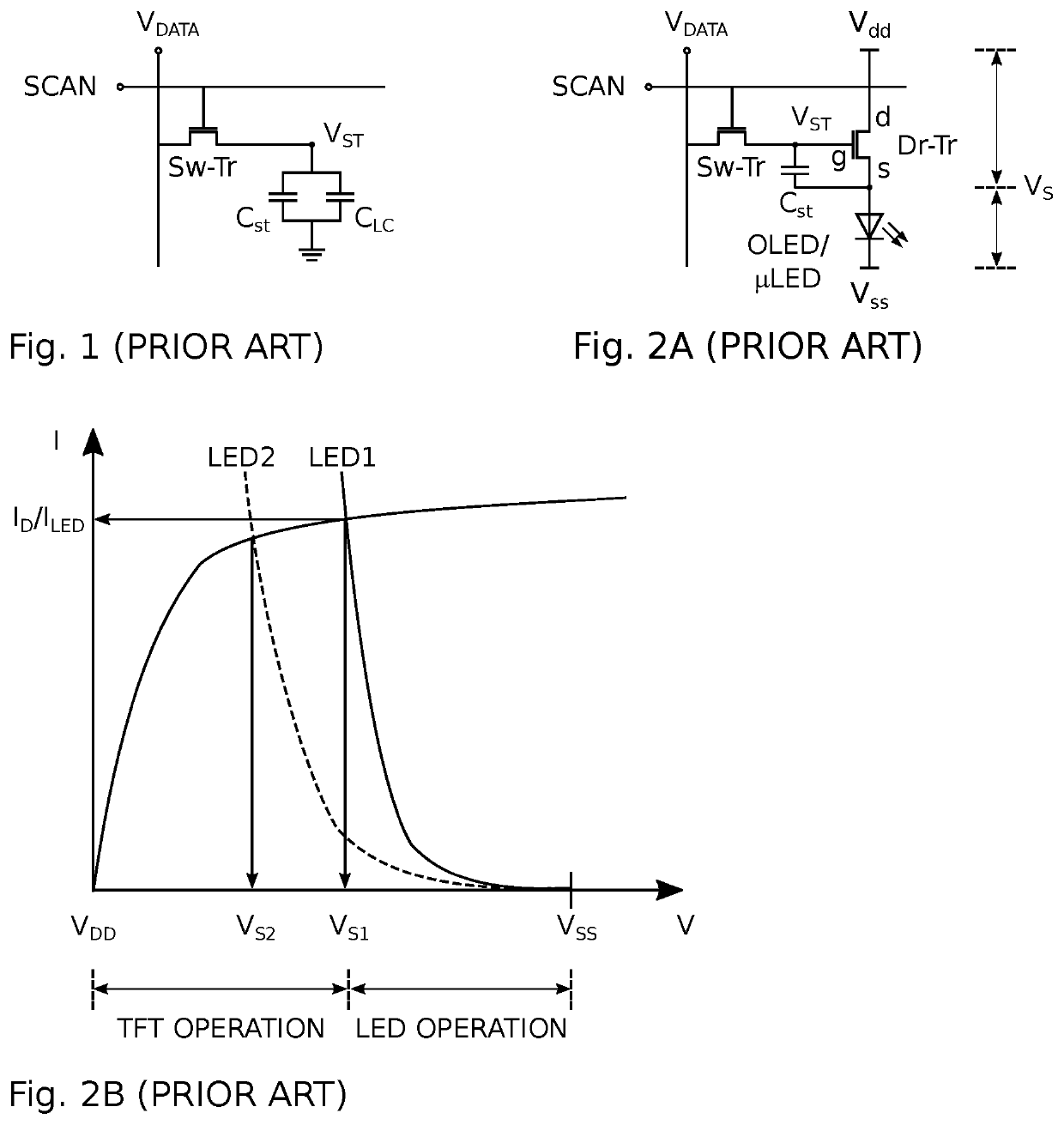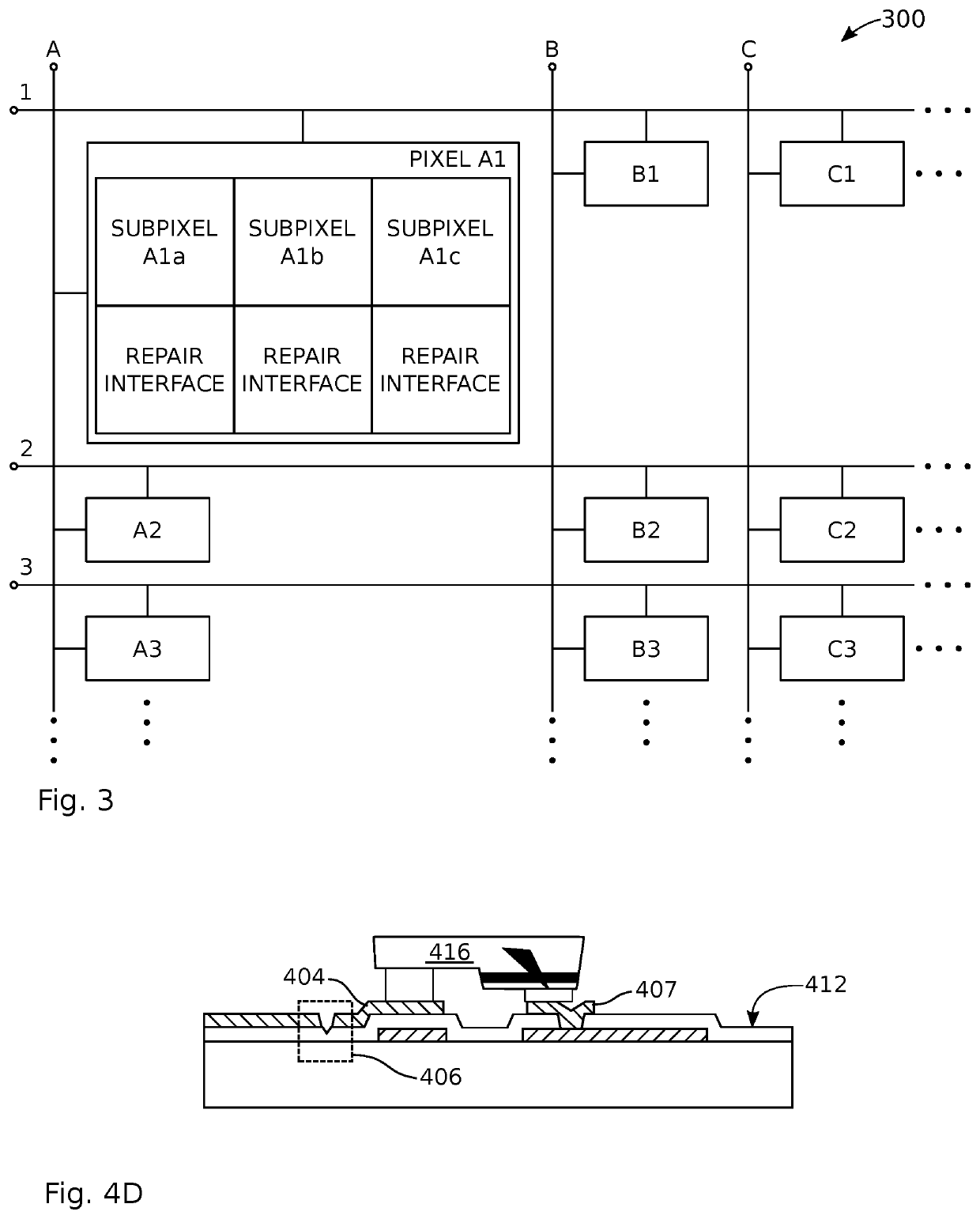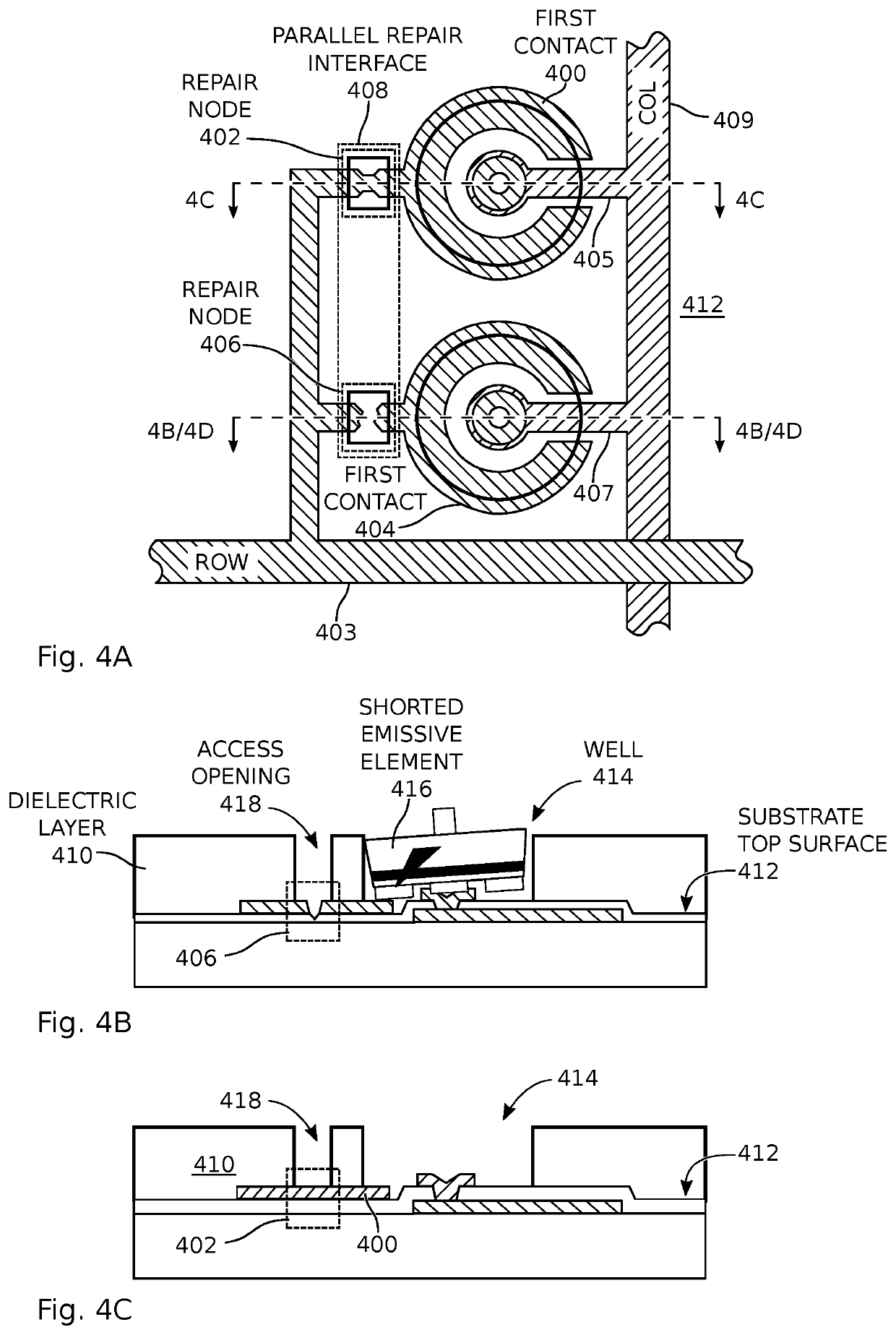System and Method for Light Emitting Diode (LED) Display Repair
a technology of light-emitting diodes and display panels, applied in the field of display technology, can solve the problems of affecting the operation of display panels, and reducing the efficiency of light-emitting diodes, so as to increase the operating voltage of pixels, reduce power consumption, and increase assembly yield
- Summary
- Abstract
- Description
- Claims
- Application Information
AI Technical Summary
Benefits of technology
Problems solved by technology
Method used
Image
Examples
Embodiment Construction
[0034]The general process for making a micro-light emitting diode (μLED or microLED) display using inorganic LEDs and fluidic assembly on a display backplane has been reported in the parent applications U.S. Pat. Nos. 9,825,202 and 10,418,527, which are incorporated herein by reference. In particular, the process flow for making a suitable display backplane is described in U.S. Pat. No. 9,825,202 in the explanation of FIG. 17, and the geometric requirements for fluidic assembly are presented in the explanation of FIG. 16. Although the emissive elements described herein are typically LEDs, alternatively they may be any electrical component capable of emitting light.
[0035]FIG. 3 is a schematic block diagram depicting a display with emissive element repair interfaces. The display 300 comprises a substrate with a top surface (shown in subsequent figures) and a matrix of electrically conductive control (column and row) lines. For simplicity, only row lines 1, 2, and 3 are shown with colu...
PUM
| Property | Measurement | Unit |
|---|---|---|
| threshold voltage | aaaaa | aaaaa |
| voltage | aaaaa | aaaaa |
| thick | aaaaa | aaaaa |
Abstract
Description
Claims
Application Information
 Login to View More
Login to View More - R&D
- Intellectual Property
- Life Sciences
- Materials
- Tech Scout
- Unparalleled Data Quality
- Higher Quality Content
- 60% Fewer Hallucinations
Browse by: Latest US Patents, China's latest patents, Technical Efficacy Thesaurus, Application Domain, Technology Topic, Popular Technical Reports.
© 2025 PatSnap. All rights reserved.Legal|Privacy policy|Modern Slavery Act Transparency Statement|Sitemap|About US| Contact US: help@patsnap.com



